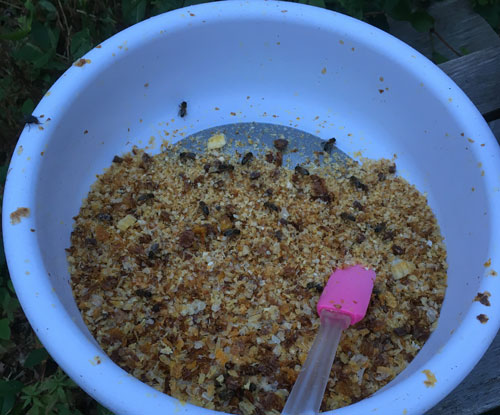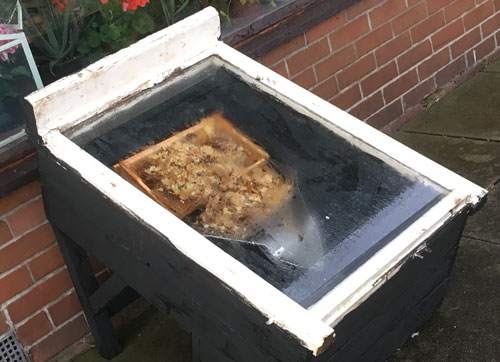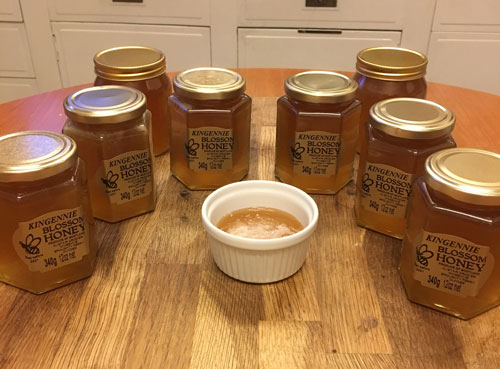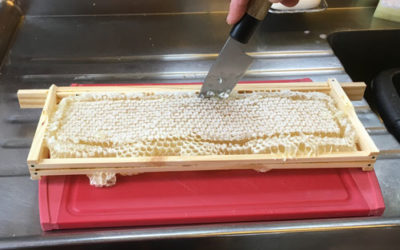I managed to harvest a little runny honey from one of the hives, as you can see from the photo. It’s less sweet and more floral in flavour compared to the spring honey. Now I’m not harvesting any more honey I shall put a varroa mite treatment in each hive. This is a parasite of honey bees which was first discovered in the UK in 1992 and weakens hives to the point that they can collapse and die out over winter. I’ve only seen a small number of varroa mites in any of my hives but they can multiply quickly and so I’m treating to reduce their numbers going into the winter to both help my bees to come through the winter successfully and to hopefully mean there are less varroa next year making the hives stronger and more successful.
After harvesting, I gave the frames back to the bees to clean up and take any residual honey from the comb before storing away the extra frames for the winter. In the photo, you can see bees cleaning the honey off the wax cappings from the comb that I harvested. I leave one super (frame) on each hive and if it isn’t full of honey then I will feed the bees some sugar solution.
I’m left with all the wax scrapings from the frames, wax caps from the stored honey and it is good practice to replace some brood frames each year as a way to reduce the chances of disease build up. All of this contains useful wax and so I have constructed a solar wax extractor using an old window and some spare wood. I expect it will take a long time to melt all this wax over the winter because there isn’t much sun and it isn’t as hot during the day. This simple extractor is shown below.





